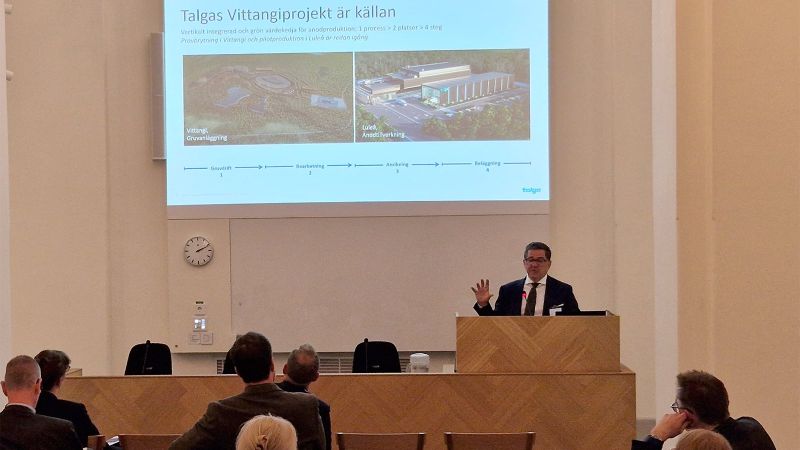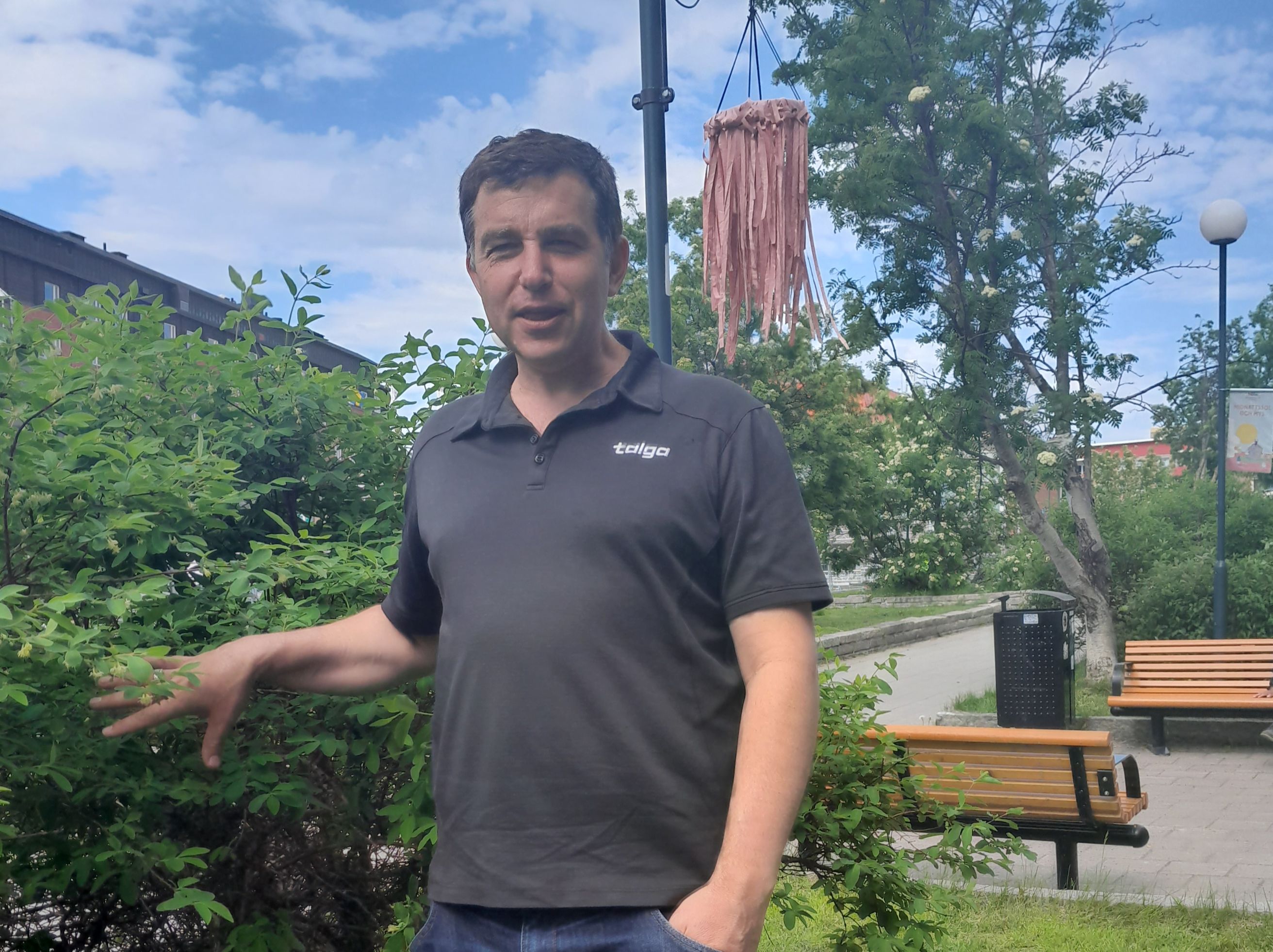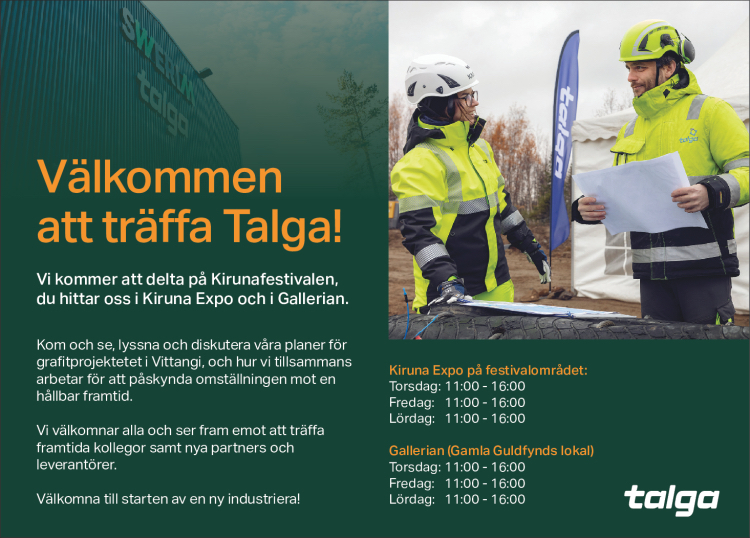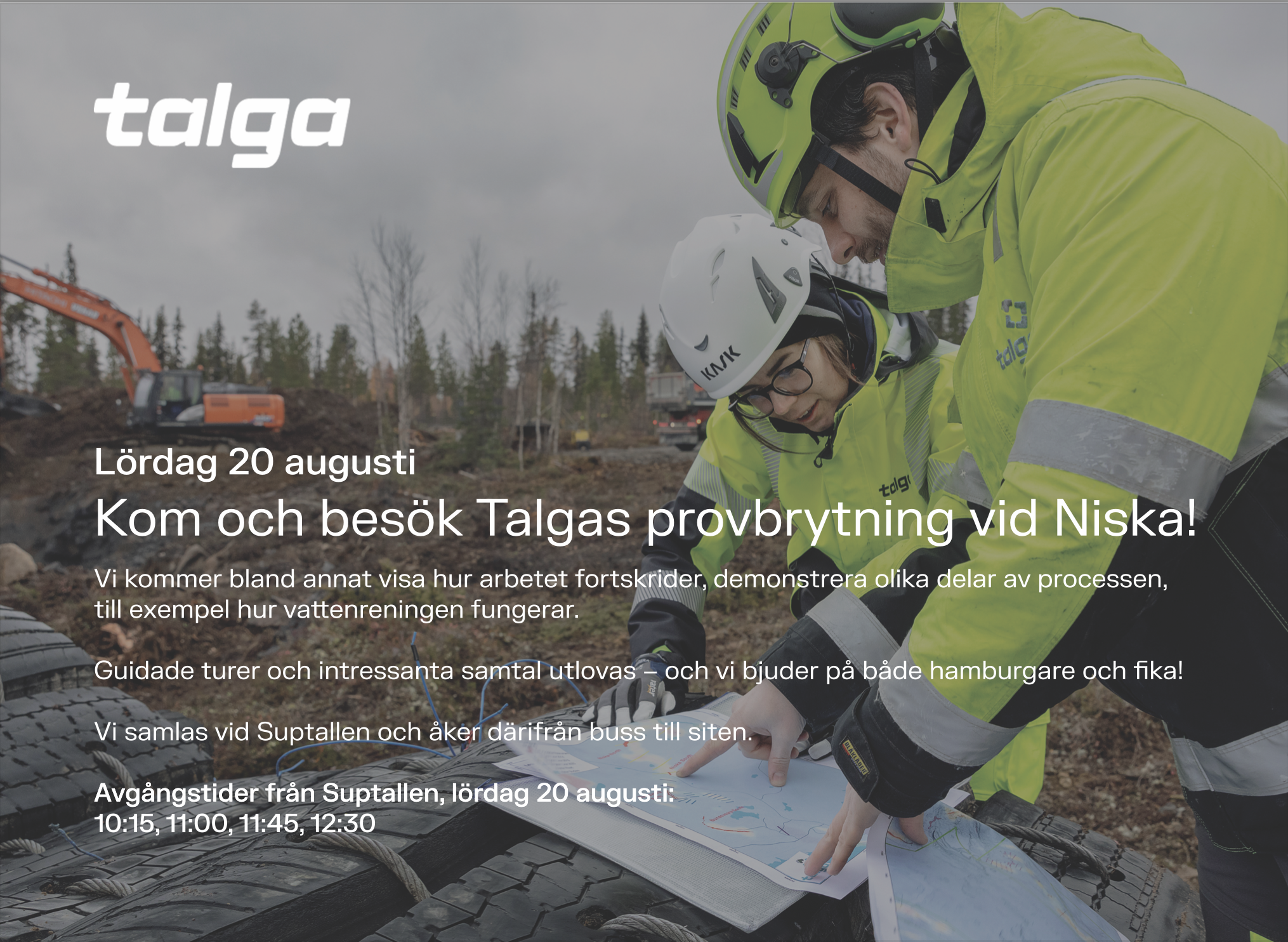"Debate: A sustainable roadmap for the mining industry
As Sweden and the rest of the world get rid of their dependence on fossil fuels, the demand for metals and minerals increases. To achieve the goal in the Paris Agreement, an expansion of wind turbines, solar cells, batteries, electrolysers for hydrogen and digital technology is needed, write Maria Sunér, CEO Svemin and Svante Axelsson, national coordinator for Fossil-Free Sweden.
Published
: June 21, 2022, 11:15
According to the International Energy Agency (IEA), six times more minerals will be required than today - and many times more for certain specific energy-critical metals such as lithium, cobalt and many of the rare earth metals.
The mining, metal and mineral industries today account for seven percent of national carbon dioxide emissions. The processes account for the vast majority of the industry's emissions, followed by the transports in the mining.
All activities that take up land also affect the local environment. In order to be able to increase production, it is therefore crucial that fossil-free and social and environmental sustainability go hand in hand.
Russia's war in Ukraine has brutally shown how sensitive today's European energy system is to its dependence on Russian oil and gas. When it comes to energy-critical metals and minerals, the EU is also heavily dependent on imports. More than half of the global supply of cobalt used in batteries in both electric cars and mobile phones comes from the politically unstable Democratic Republic of Congo where child labor occurs. The market for cobalt, rare earth metals and many other of the critical metals is controlled by China.
Sweden has long been Europe's leading mining nation. Over 90 percent of all iron ore produced in the EU comes from Sweden and we are also large producers of zinc and copper. In Sweden, there are also deposits of more than half of the raw materials that the EU considers critical to cope with the transition. Both graphite and cobalt as well as rare earth metals have been found, but no mines have yet been opened.
Among other things, Talga wants to mine graphite in Vittangi, which is estimated to provide the opportunity to produce anode material for 400,000 electric cars a year for 19 years with a climate footprint that is 96 percent smaller than the market-leading anode materials today.
Already today, the production of ore and metals in Sweden is 60–90 percent less emission-intensive than the corresponding production internationally. It provides a global climate benefit of 6.4 million tonnes of carbon dioxide per year if it replaces international production with a higher climate footprint, according to calculations from Material Economics. This is thanks to the virtually fossil-free electricity system in combination with the industry's investments in electrification, digitization and the development of new inputs, processes and equipment. Today's mines are therefore far from what mines were just a few years ago and the industry has already begun to adjust to become even more sustainable in the future.
Within the framework of Fossil-Free Sweden, 22 industries have developed roadmaps for fossil-free competitiveness where they describe how they will be fossil-free or climate-neutral by 2045. The mining and minerals industry presented its first roadmap in 2018 with the goals that mining, including transport, will be fossil-free by 2035. processes and energy use as well as by 2045. Since then, the industry has also adopted a roadmap to increase biodiversity by 2030 in all the regions where mining and exploration are ongoing.
In light of the increased demand such as the electrification of transport and industries and the technological development within its own industry, the mining and minerals industry today (Tuesday 21 June) is the first industry to present an upgrade of its roadmap for fossil-free competitiveness. With an increased demand for sustainably produced metals and minerals, the demands on the industry to accelerate its transition also increase.
An important part of this is that the material that has already been mined from the bedrock is used for as long and as efficiently as possible. If companies in the entire value chain from mining to product design and recycling can work together, there is great potential here in improving the collection and recycling of, for example, electronic waste, and in recovering metals that are currently lost in the material streams. According to calculations from the World Bank, a fully developed recycling could cover 15-26 percent of the need by 2050. The industry is already working today with recycling and circularity. Boliden has one of the EU's largest facilities for recycling electronic scrap and LKAB plans to extract phosphorus and earth metals from the waste sand from iron production. The project has the potential to meet 30% of the EU's need for rare earths, and more than the whole of Europe's phosphorus needs. So it's not about recycling or mining - but about both.
The Swedish mining and mineral industry has the potential to lay the foundation both for the implementation of the Swedish industry's roadmaps and, through exports, for the whole of Europe's adjustment. But in order to achieve this goal and realize the potential of the industry, the policy must also provide the right conditions.
Efficient and predictable permit processes. The government must work both for a more efficient application procedure but also be active in influencing processes in the matter within the EU so that they are adapted to Swedish conditions.
Secure access to fossil-free electricity. To achieve the goal, the industry needs to make investments in electric vehicles. In 2045, the electricity demand is up to 74 TWh, which is an increase of 69 TWh based on today's electricity use. Substantial investments in electricity networks and electricity production are required for the electrification of the mines to be possible.
Enables hydrogen production and storage. Hydrogen will play an increasingly important role in the energy system. There is a need for a national strategy and rules at national and EU level need to be designed so that it promotes the expansion of hydrogen production and storage as well as hydrogen infrastructure.
Stimulate metal recycling. Circular solutions to increase the recycling of metals do not replace the need for mining, but are a cornerstone for being able to create a fossil-free society. A national strategy is needed to maximize the recycling of metals in society with a goal of close to 100 percent circulation
Sweden is at the beginning of a green industrial revolution. With this updated roadmap and the right conditions from politics, the Swedish mining industry can make it possible for a number of other industries to change as well. Together we can build a fossil-free welfare state.
Maria Sunér , CEO of Svemin
Svante Axelsson , national coordinator for Fossil-Free Sweden"
https://www.di.se/debatt/debatt-en-hallbar-fardplan-for-gruvnaringen/








